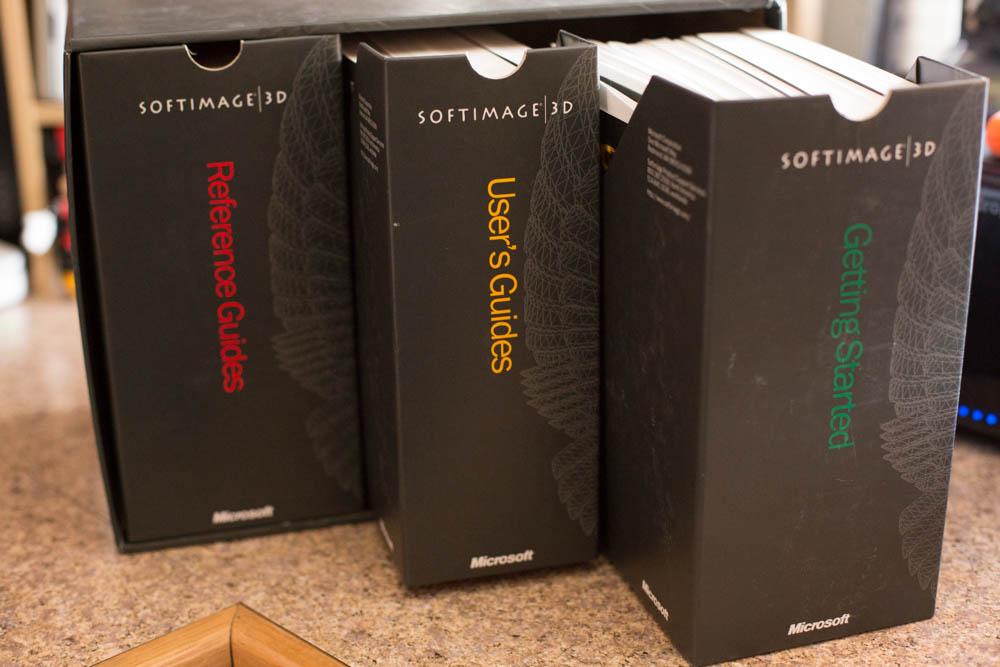


began developing a successor to Softimage|3D codenamed "Sumatra," which was designed with a more modern and extensible architecture to compete with other major packages like Alias|Wavefront's Maya. 3D paint functionality was added a year later in version 3.7. Softimage|3D Extreme 3.5, released later that year, included particle effects and the mental ray renderer, which offered area lights, ray tracing, and other advanced features.
#Softimage 3d windows#
The first Windows port of Softimage|3D, version 3.0, was released in early 1996.
#Softimage 3d software#
with the intention of introducing high-end 3D animation software to its Windows NT platform, and subsequently renamed it "Softimage|3D." In January 1995, Softimage|3D was announced as the official 3D development tool for the Sega Saturn. In 1994, Microsoft acquired Softimage, Co. Its character animation toolset expanded substantially with the addition of inverse kinematics in version 2, which was used to animate the dinosaurs in Jurassic Park. Softimage Creative Environment was adopted by major visual effects studios like Industrial Light & Magic and Digital Domain for use in their production pipelines, which also typically included software from Alias Research, Big Idea Productions, Kroyer Films, Angel Studios, Walt Disney Feature Animation Inc., and Pixar Animation Studios Inc. The software was initially demonstrated at SIGGRAPH in 1988 and was released for Silicon Graphics workstations the following year as the Softimage Creative Environment™. In 1986, National Film Board of Canada filmmaker Daniel Langlois, in partnership with software engineers Richard Mercille and Laurent Lauzon, began developing an integrated 3D modeling, animation, and rendering package with a graphical interface targeted at visual artists. It was superseded by Softimage XSI in 2000. Softimage|3D is a discontinued high-end 3D graphics application developed by Softimage, Co., which was used predominantly in the film, broadcasting, gaming, and advertising industries for the production of 3D animation. In other words, more modeling, animation, and effects tools.4.0 / August 2001 20 years ago ( 2001-08) I'd like to see some more serious functionality added to Avid 3D 3.0, myself. For $1000 less, you can get softimage XSI 5.0 Foundation, which provides 5-to-10 times the power of Avid 3D. For $500 more, you can get the mid-range softimage XSI 5.0 Essentials, with paint, compositing, and other extras. My main gripe about Avid 3D is its price, $1495. Otherwise, they offer you Avid 3D for easy 3D, great-looking elements in your video compositions. Put it this way: Avid WANTS you to buy softimage XSI if you need its capabilities. It's limited, but it's growing with every release. What it was designed to be is an easy-to-use 3D application that allows editors to create and integrate 3D objects into their video editing projects. Avid 3D may be fairly limited in its feature set, but lets remember what it wasn't designed to be: a full-featured 3D animation application. Whether or not they are the same program I'm not sure.
#Softimage 3d movie#
As for how you'd integrate it or Maya into your Xpress workflow, the best thing I could think of would be to complete your scene in your 3D app, then render out the movie and import into Xpress Pro.Īvid 3D is supposedly based-off of softimage 3D (which is now defunct and has been for several years). Get softimage XSI for TRUE 3D animation abilities.


 0 kommentar(er)
0 kommentar(er)
